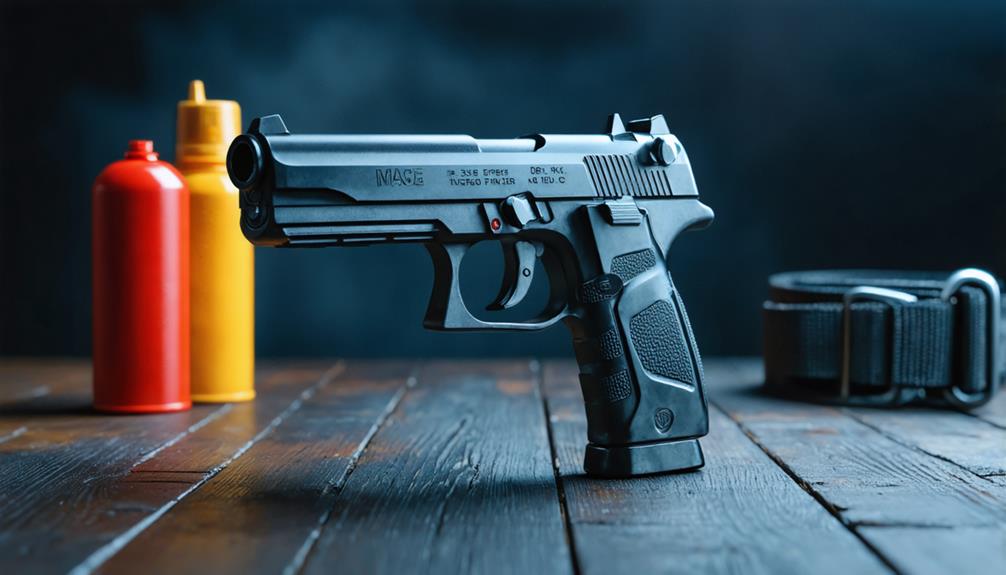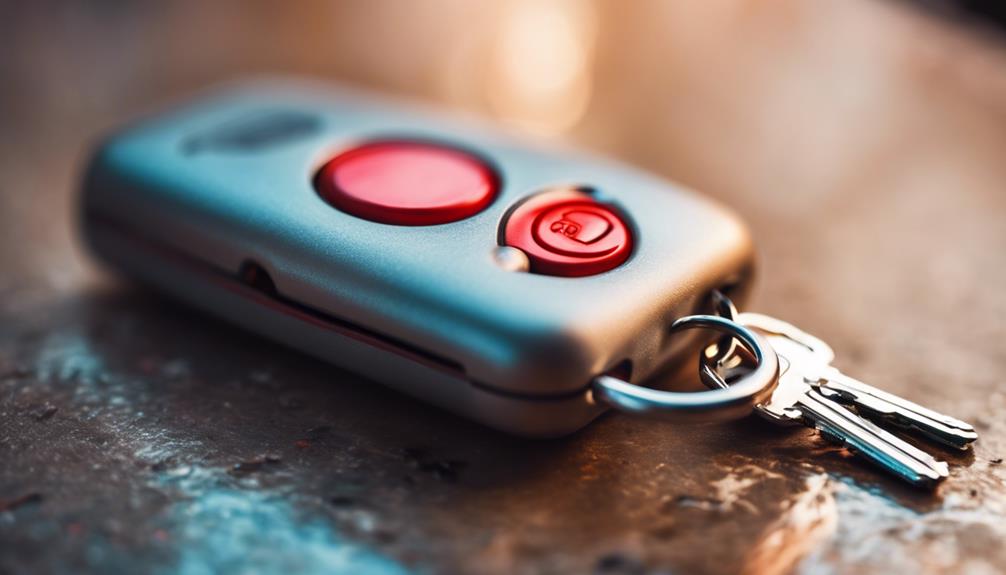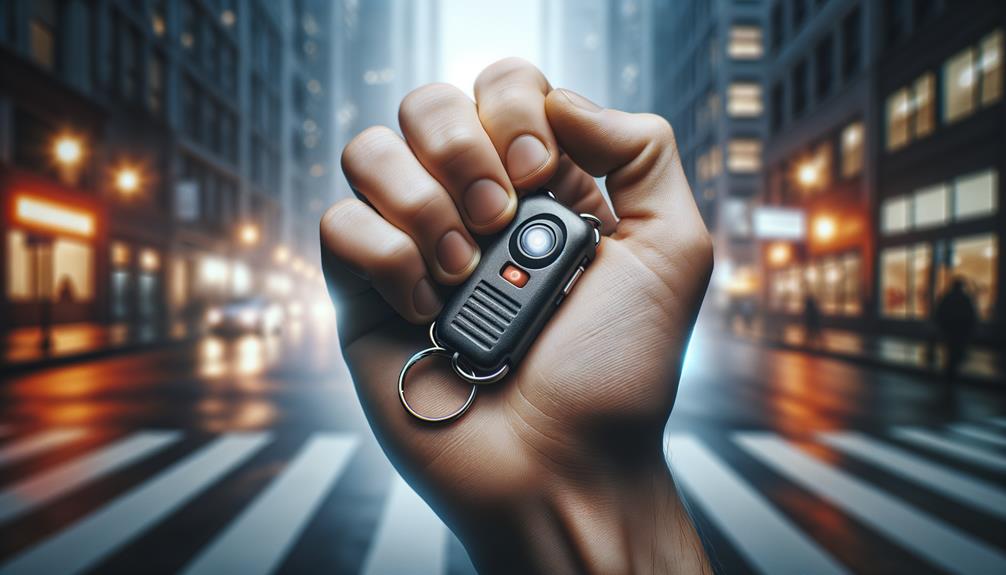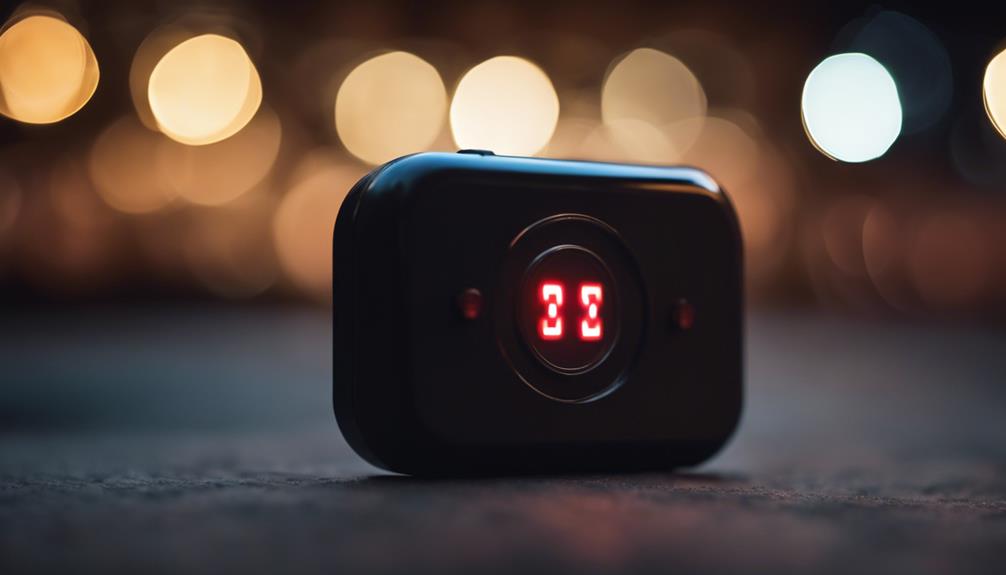
Brainstorm Security Shop

For Orders Over $199

On Any Of Our Products

Details On Refund Page
Imagine you’re walking home late at night, the streets are dimly lit and silent. Suddenly, the feeling of unease creeps up your spine. You remember the personal sound alarm you’re carrying, equipped with both a piercing siren and blinding lights. It’s designed to startle an aggressor and signal for help when you most need it. But how effective are these devices really? Are they all created equal, or are some models more reliable than others? In the following sections, we’ll explore the key features, benefits, and limitations of these alarms, helping you make an informed decision on whether they’re a worthy addition to your safety arsenal.
Personal alarms are compact devices designed to emit a loud noise and often a flashing light when triggered, enhancing your safety and alerting others in emergencies.
You might wonder why you’d need one. Well, consider them a proactive measure to protect yourself in unpredictable situations. Whether you’re walking alone at night, traveling through unfamiliar areas, or find yourself in any vulnerable situation, having this handy tool can make a significant difference.
It’s all about peace of mind. Imagine you’re jogging in the park and an uncomfortable encounter arises. With a quick pull or press, your personal alarm blasts a sound that’s hard to ignore, drawing immediate attention to your location. This sudden noise can disorient a potential threat, giving you precious moments to react or escape.
Moreover, their simplicity is key. You don’t need to be tech-savvy to use them effectively. These devices are built for instant reaction without fumbling through complicated settings. Just activate, and it does its job, making it a straightforward yet powerful ally in enhancing your personal security.
They’re a small investment in your safety, but the benefits are immense, offering you a greater sense of security in your daily life.

Now let’s explore what makes these alarms effective by examining their key features and specifications. Typically, these devices are equipped with a loud siren that can reach up to 130 decibels. This high volume is crucial for attracting attention quickly in an emergency. They’re also fitted with bright LED lights that provide visibility and can disorient an attacker momentarily.
These alarms are usually compact and lightweight, making them easy for you to carry in a pocket or attach to a keychain. They often feature a simple activation mechanism, such as a pull-pin or push-button, which you can operate swiftly and easily in stressful situations. The durability of these alarms is another vital aspect. They’re designed to be weather-resistant and impact-resistant, ensuring they work in various environments and withstand accidental drops.
Battery life is a key specification. Most models use batteries that can last several months without replacement, ensuring they’re ready when you need them. Additionally, some alarms come with replaceable batteries while others have rechargeable ones, giving you options based on your preference for maintenance and sustainability.
Why consider a personal alarm with both sound and light features? Well, you’ll find they offer a dual-layer of security that significantly enhances your safety in various situations. When you activate your alarm, the loud sound immediately draws attention to your location. This noise is crucial if you’re in distress; it can deter attackers and alert passersby or authorities to your need for assistance.
Additionally, the flashing light adds a visual alert that’s particularly useful in noisy environments where sound alone mightn’t catch someone’s attention. It’s also effective in dark settings where visibility is low, ensuring you’re seen as well as heard. This combination makes it harder for any threat to ignore or evade the alarm.
You’ll appreciate the psychological comfort, too. Knowing you have this powerful tool at your disposal can make you feel more confident and secure when you’re out, especially if you’re alone or in an unfamiliar area. It’s not just a personal safety device; it’s a peace-of-mind booster that keeps you feeling safer wherever you go.
Understanding the benefits of sound and light alarms, let’s explore how to effectively use your personal alarm.
When you find yourself in a situation where you feel threatened, it’s crucial to carry your personal alarm within easy reach. You could attach it to your keychain, handbag, or belt loop. Make sure it’s somewhere you can access quickly without looking.
To activate the alarm, most models will have a pin or button. Pull the pin or press the button to trigger the loud siren and flashing lights. The noise and light are designed to disorient an attacker and attract attention from others nearby. Don’t be shy about using it; the situation warrants it if you’re feeling scared or threatened.
After activation, try to move to a safer area if possible, while keeping the alarm sounding. This continues to alert others around you and increases your chances of receiving help.
Carrying your personal alarm properly ensures you can activate it quickly in an emergency. You’ll want to keep it somewhere accessible, not buried at the bottom of a bag or tucked away in a rarely used pocket. Attach it to your keychain, belt loop, or the strap of your purse where you can grab it without looking.
Always check that your alarm is in working order before you head out. It’s no good to you if it’s out of batteries or malfunctioning. Make it a habit to test it regularly; this way, you’ll know it’s ready to go when you need it most.
Be discreet but strategic about where you carry your alarm. If it’s too visible, it could be tampered with or taken by an aggressor. Yet, it should be within a swift arm’s reach. Consider wearing it on a lanyard under your shirt or on a retractable key holder clipped inside your jacket pocket.
Lastly, familiarize yourself with the alarm’s mechanism. Practice activating it quickly. The more familiar you’re with its function, the more effectively you can use it under stress. Your safety may depend on these crucial seconds.

Now that you’re familiar with how to carry and use your alarm, let’s explore some of the top models available on the market. You’ll want something reliable, easy to use, and effective at drawing attention in an emergency.
First up is the SafeSound Personal Alarm. It’s a popular choice, boasting a 130dB alarm—loud enough to be heard from a considerable distance. This model is compact and comes with a built-in LED light, making it ideal for nighttime use. It’s activated simply by pulling a pin, which you can do quickly and effortlessly.
Another great option is the Vigilant 130dB Personal Alarm. It features a backup whistle, battery included, that works when the alarm’s battery runs out. Its design includes a key ring, allowing you to attach it easily to your bag or keys.
For those who prefer a more tech-savvy solution, the BASU eAlarm Plus is an excellent choice. Besides emitting a 130dB alarm, it also connects to an app that sends your GPS location to emergency contacts.
Each of these models offers unique features, but all are designed to help keep you safe. Choosing the right one depends on your personal preference and specific safety needs.
To keep your personal alarm functioning optimally, regular maintenance is essential. You’ll want to start by regularly checking the battery life since a dead battery means no alarm.
Make it a habit to test the alarm once a month by pressing the test button to ensure it’s loud and clear. If it’s not, replace the batteries immediately.
You should also keep the alarm clean. Dust and debris can clog the speaker and affect the sound quality. Use a soft, dry cloth to wipe the exterior gently. Don’t use water or harsh cleaning agents as they could damage the electronics inside.
Be mindful of where you store your alarm. Extreme temperatures and exposure to moisture can harm its functionality. Opt for a cool, dry place away from direct sunlight.
Lastly, check the integrity of the clip or keychain if your alarm has one. These are often the first parts to wear out with regular use. If you notice any weakness or damage, consider replacing the part to ensure your alarm remains securely attached to your bag, keys, or belt loop.
As you’ve seen, a personal alarm with sound and light is a crucial safety tool that’s easy to use and carry. Whether it’s startling an attacker with a loud siren or catching the eye with flashing lights, this device provides an essential layer of protection.
Remember to keep it accessible, maintain it regularly, and choose a model that fits your needs.
Stay safe and empowered by integrating this practical device into your daily safety routine.
